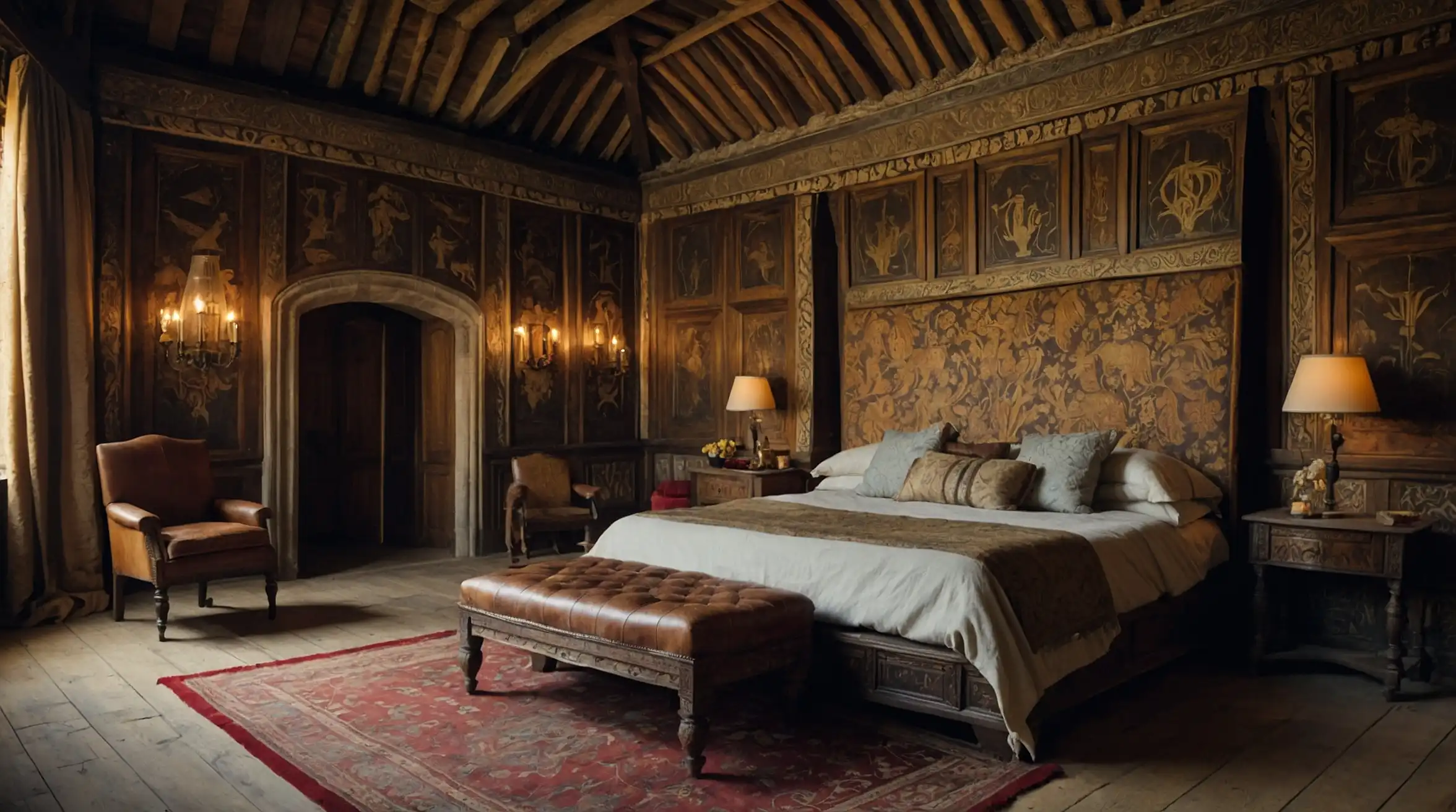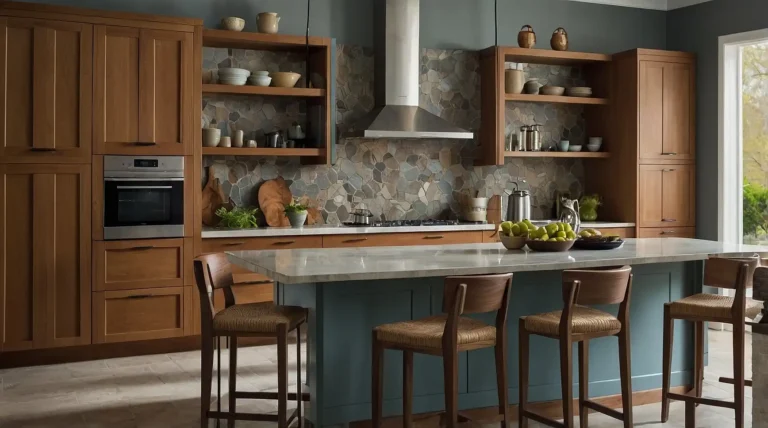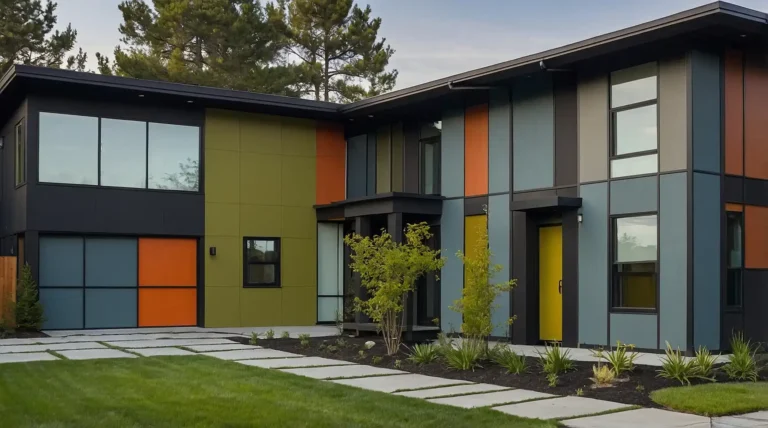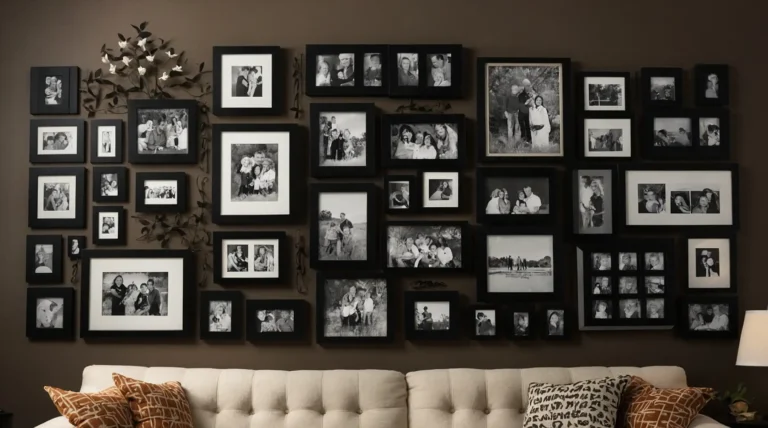27 Medieval Bedroom Ideas to Transform Your Space into a Royal Chamber
Ever dreamed of living like royalty in your own castle chamber? Medieval-inspired bedrooms combine rustic charm with regal elegance, creating spaces that feel both cozy and majestic.
You don’t need to break down walls or invest in authentic 12th-century artifacts to achieve this look. With some strategic design choices, you can transform your modern bedroom into a medieval sanctuary that transports you to another time.
Let’s explore 27 medieval bedroom ideas that will help you create your own personal castle chamber.
1: Four-Poster Bed with Canopy
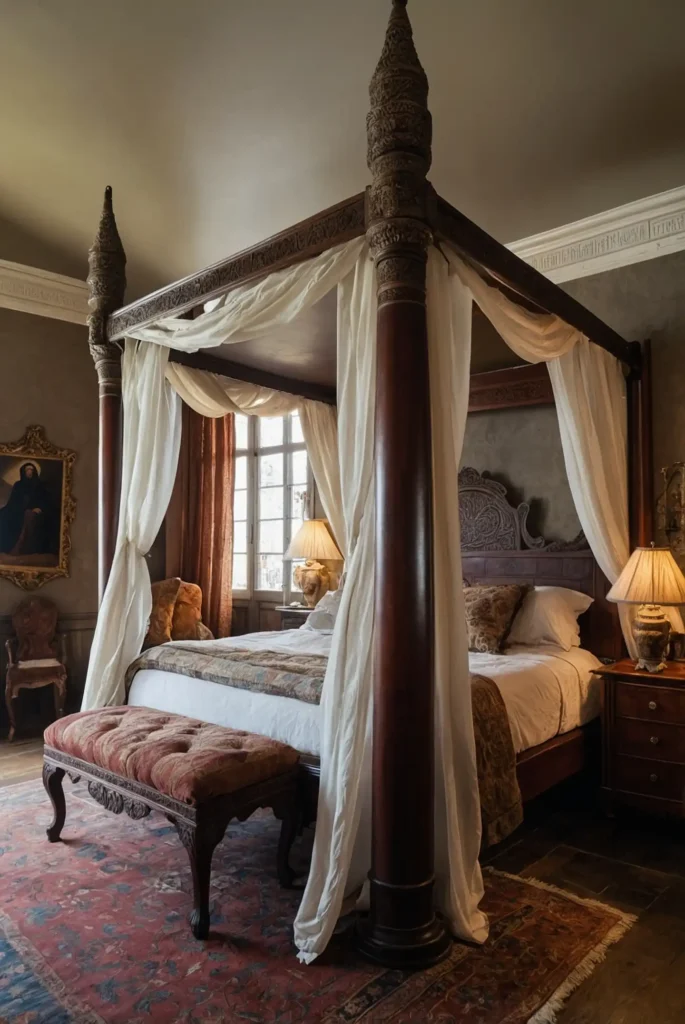
A four-poster bed serves as the centerpiece of any medieval bedroom. Choose a sturdy wooden frame with carved posts and add a canopy with rich, heavy fabric.
This creates an instant medieval atmosphere and defines your sleeping area as a special sanctuary. Opt for deep colors like burgundy, forest green, or navy blue for your canopy.
2: Stone or Stone-Look Walls
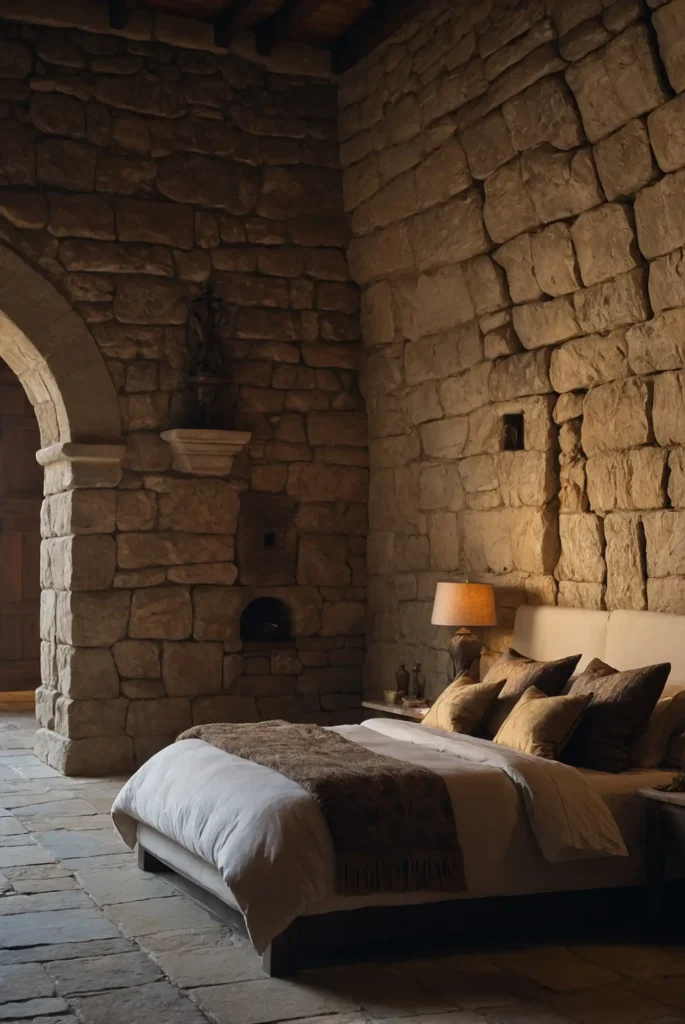
Nothing says “medieval castle” quite like stone walls. If structural changes aren’t possible, try stone veneer panels or high-quality wallpaper with stone patterns.
These options provide the authentic look without the construction hassle. Focus on irregular, rough-hewn stone patterns rather than perfectly uniform blocks for authenticity.
3: Wrought Iron Accents
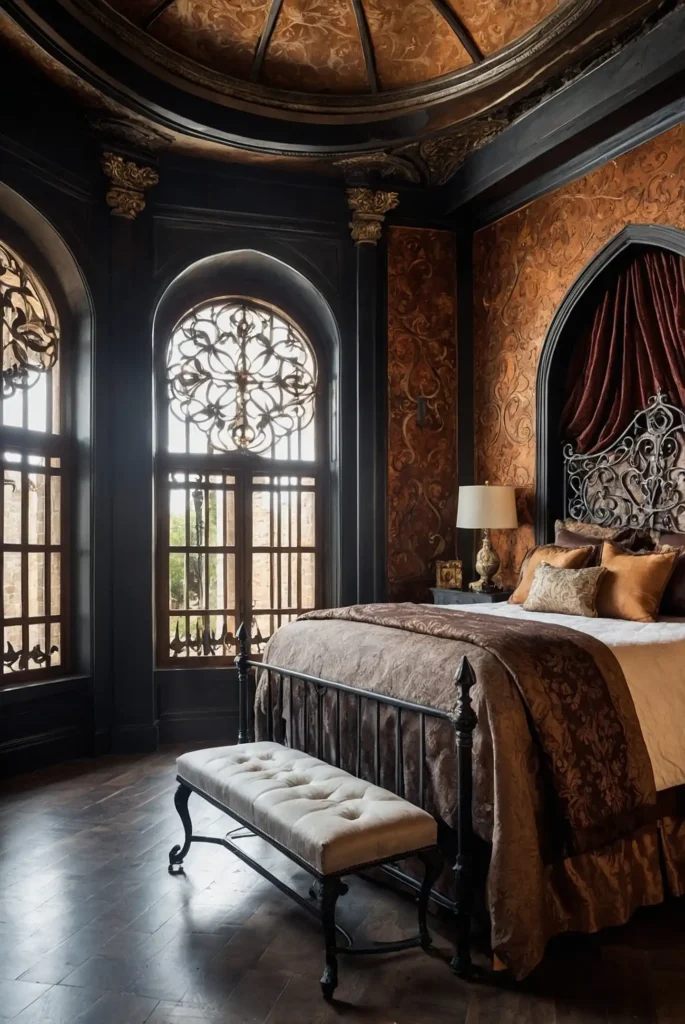
Incorporate wrought iron elements through headboards, light fixtures, curtain rods, and decorative pieces. These dark, substantial metal pieces instantly evoke medieval craftsmanship.
The intricate scrollwork and sturdy construction of wrought iron pieces add visual interest and authenticity to your space. Look for pieces with hammered textures and weathered finishes.
4: Tapestries and Wall Hangings
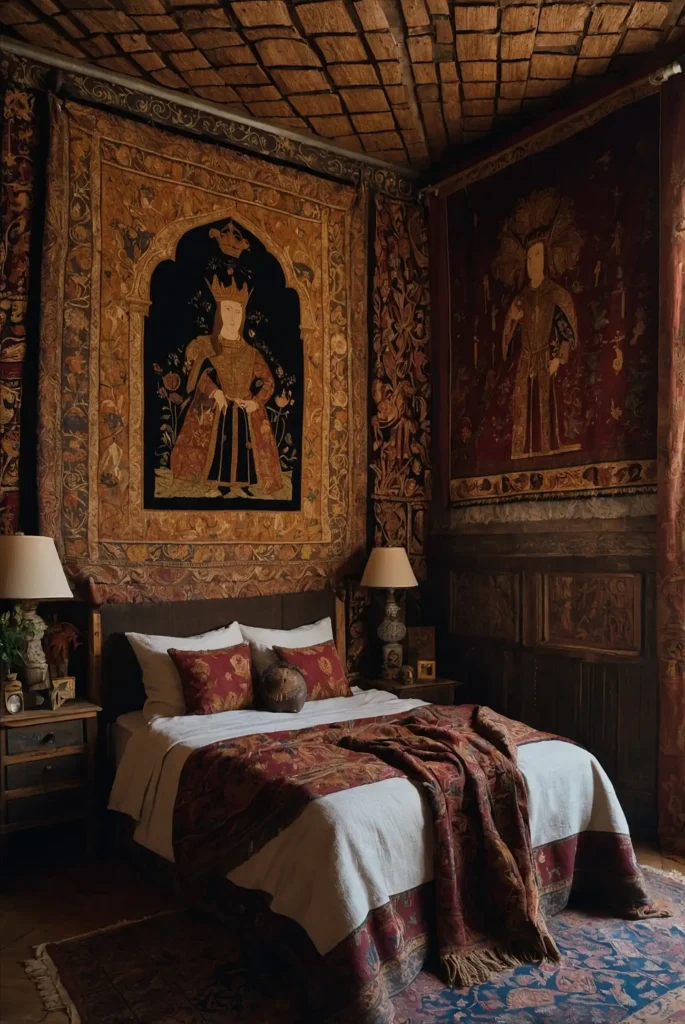
Adorn your walls with tapestries depicting medieval scenes, family crests, or nature motifs. These textiles add warmth, color, and historical context to your bedroom.
Tapestries also help with acoustics and insulation, just as they did in drafty medieval castles. Choose pieces with rich colors and intricate designs for maximum impact.
5: Arched Doorways and Windows
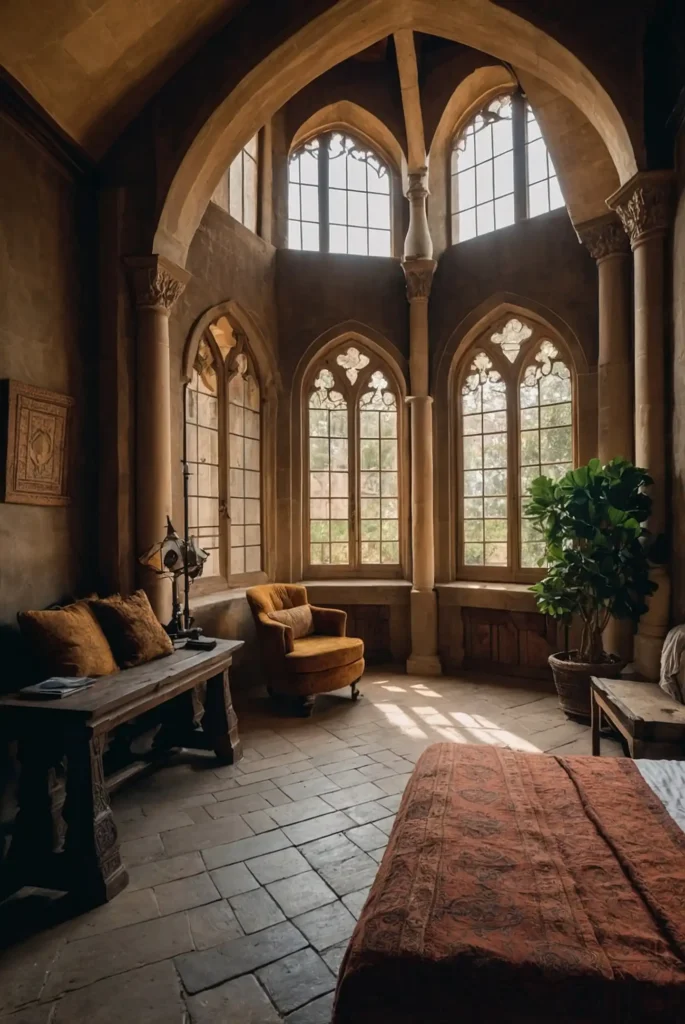
Consider adding arched elements to doorways, windows, or even mirrors.
These architectural features immediately evoke medieval cathedral and castle design.
If structural changes aren’t possible, create the illusion with arched mirrors, wall decals, or decorative wooden arches mounted above existing openings.
This simple change dramatically alters your room’s character.
6: Heavy Wooden Furniture

Invest in substantial wooden furniture with visible joinery and minimal modern hardware. Look for pieces with carved details and a weathered or distressed finish.
Avoid perfectly smooth surfaces or shiny hardware. Chests, wardrobes, and bedside tables with iron accents and visible construction methods will enhance your medieval aesthetic.
7: Faux Fur Throws and Rugs
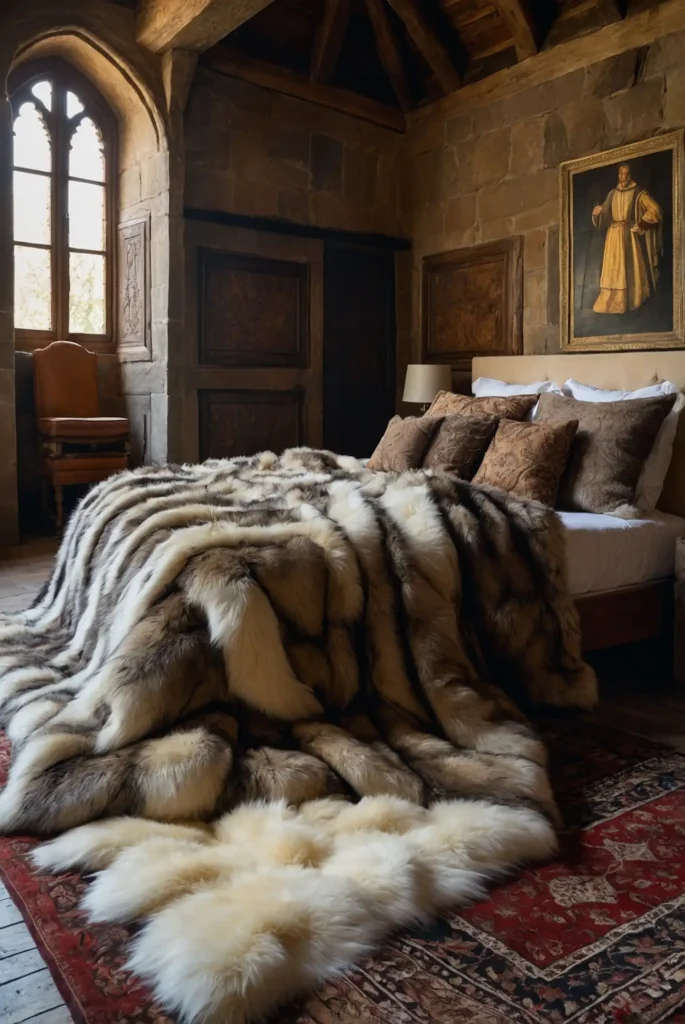
Layer your bed and floor with faux fur throws and rugs to recreate the luxurious warmth of a medieval chamber. These textures add depth and comfort to your space.
Choose natural-looking colors like brown, gray, or white.
The contrast between rough stone and soft fur was a hallmark of medieval interior design that balanced comfort with available materials.
8: Rich, Jewel-Toned Textiles
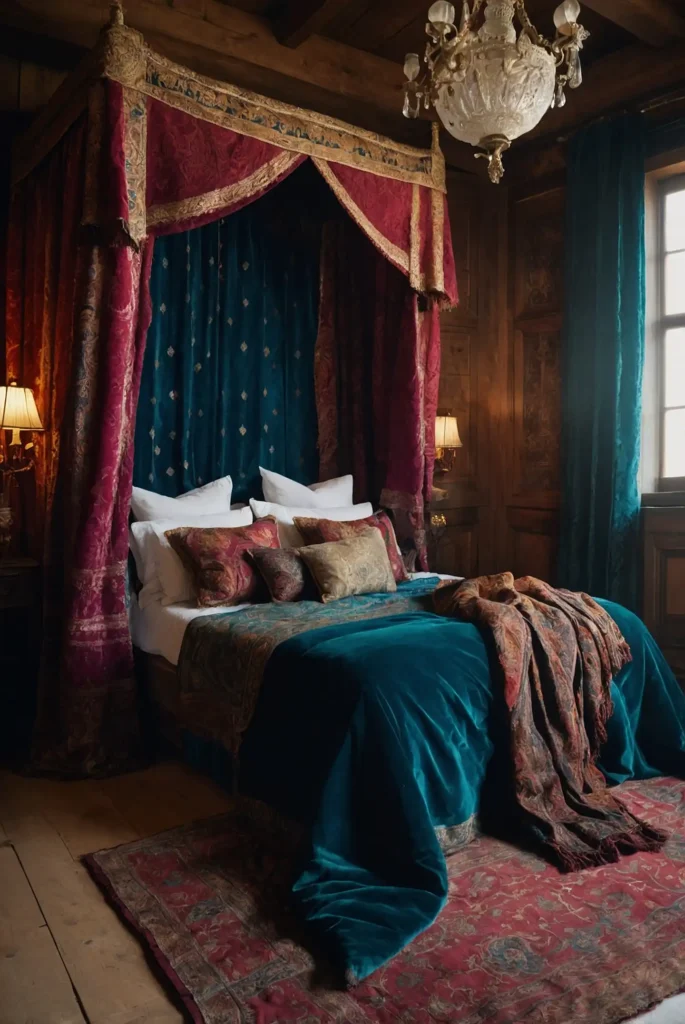
Incorporate deep, saturated colors like ruby red, emerald green, sapphire blue, and royal purple throughout your textiles. These rich hues evoke medieval luxury and royal chambers.
Use these colors in your bedding, curtains, pillows, and upholstery. Contrast them with neutral tones like beige, brown, and gray to prevent the room from feeling overwhelming.
9: Leather Accents
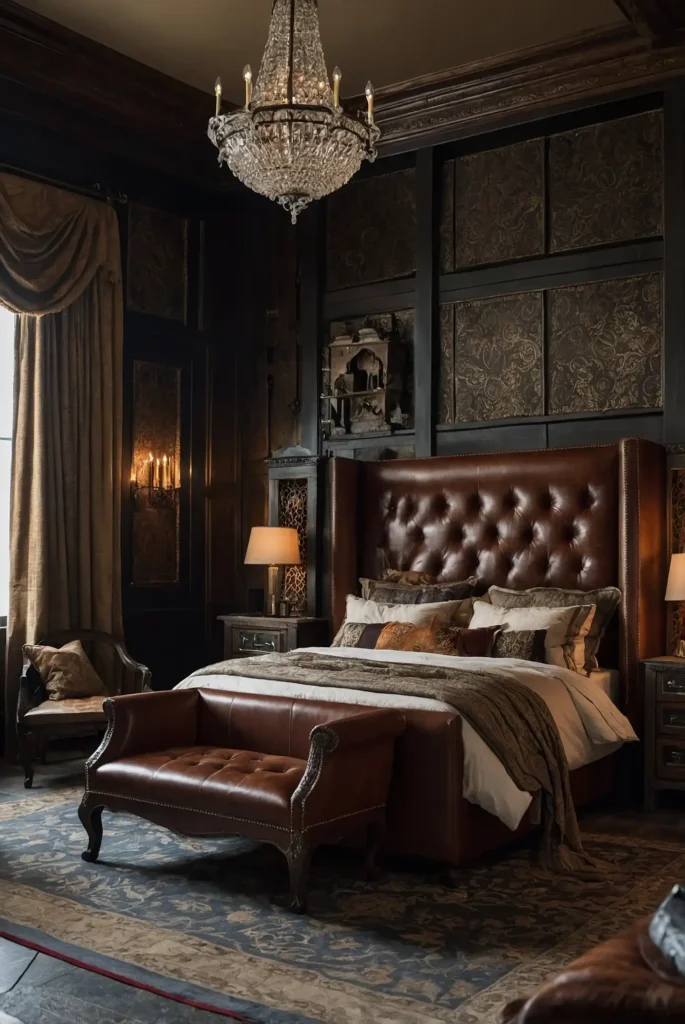
Add leather elements through furniture, headboards, or decorative accessories. Aged leather with visible stitching provides authentic medieval texture and warmth.
Look for pieces with visible studs or nailhead trim, which were common decorative techniques in medieval furniture.
A leather trunk at the foot of your bed serves both as storage and period-appropriate decor.
10: Hidden Modern Technology
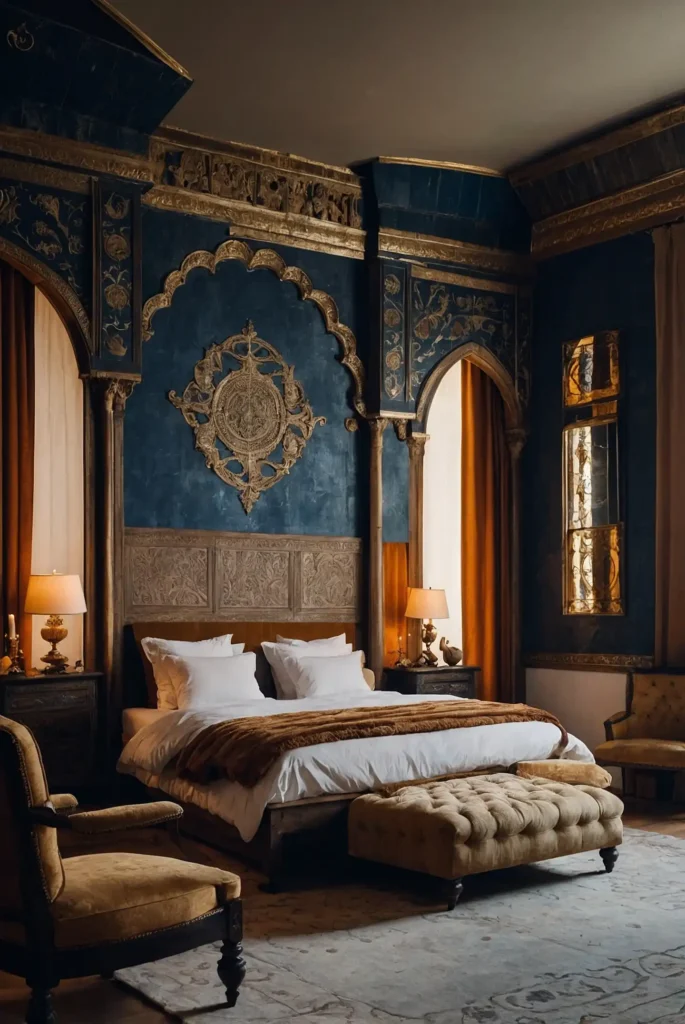
Conceal modern technology behind wooden panels, inside cabinets, or disguised as books or decorative objects. This prevents jarring anachronisms in your medieval space.
Consider TV cabinets that look like armoires, sound systems hidden in chests, and charging stations tucked inside decorative boxes.
This allows you to maintain modern convenience without disrupting your theme.
11: Medieval-Inspired Lighting
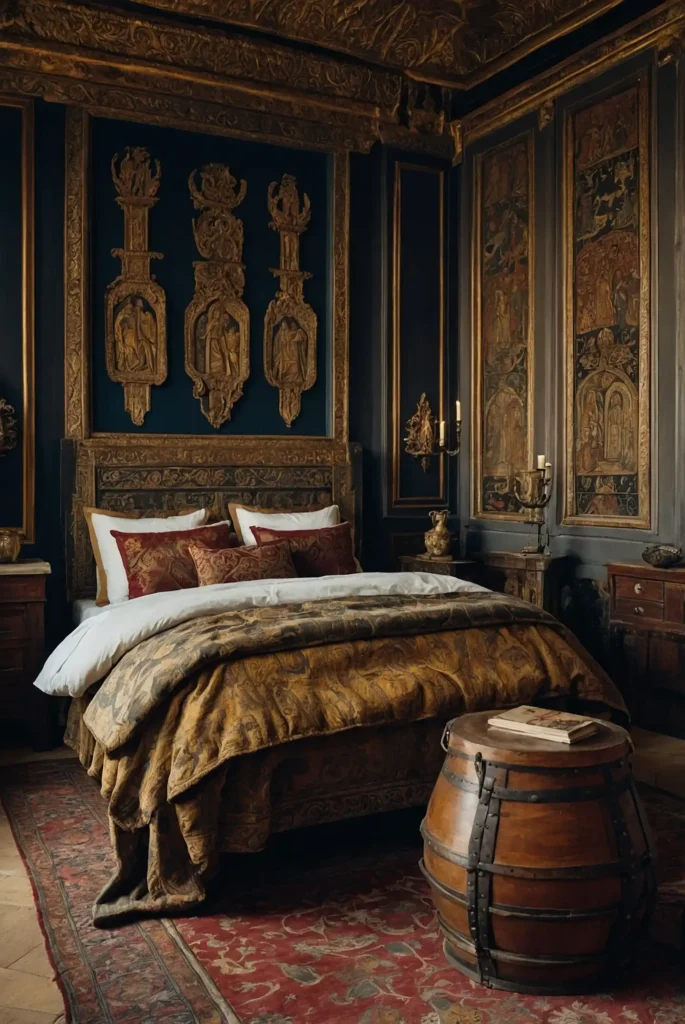
Replace modern fixtures with wrought iron chandeliers, wall sconces, or candle holders.
These dramatic lighting elements cast the perfect warm, flickering glow.
For safety, use LED flameless candles that mimic the movement of real flames.
Lantern-style fixtures with amber or warm white bulbs create the perfect medieval ambiance without fire hazards.
12: Exposed Wooden Beams
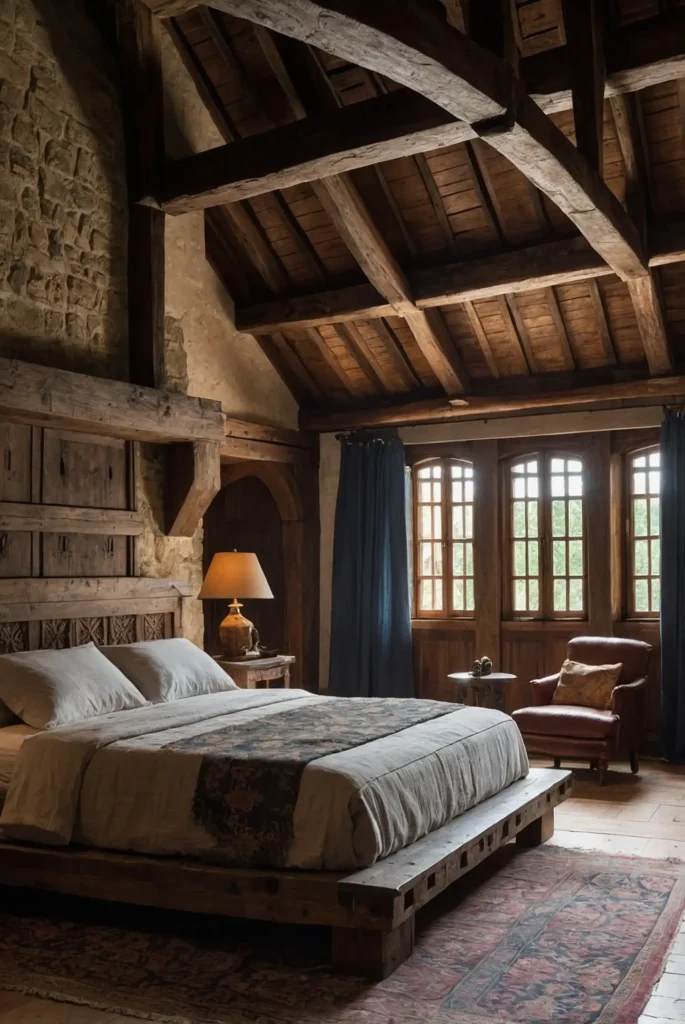
Install real or faux wooden beams across your ceiling to recreate the structural elements of medieval architecture. These beams add dimension and authenticity.
If real beams aren’t possible, hollow faux beams can be installed relatively easily and provide the same visual impact. Choose rough-hewn styles with visible grain and imperfections.
13: Heavy Curtains and Drapery
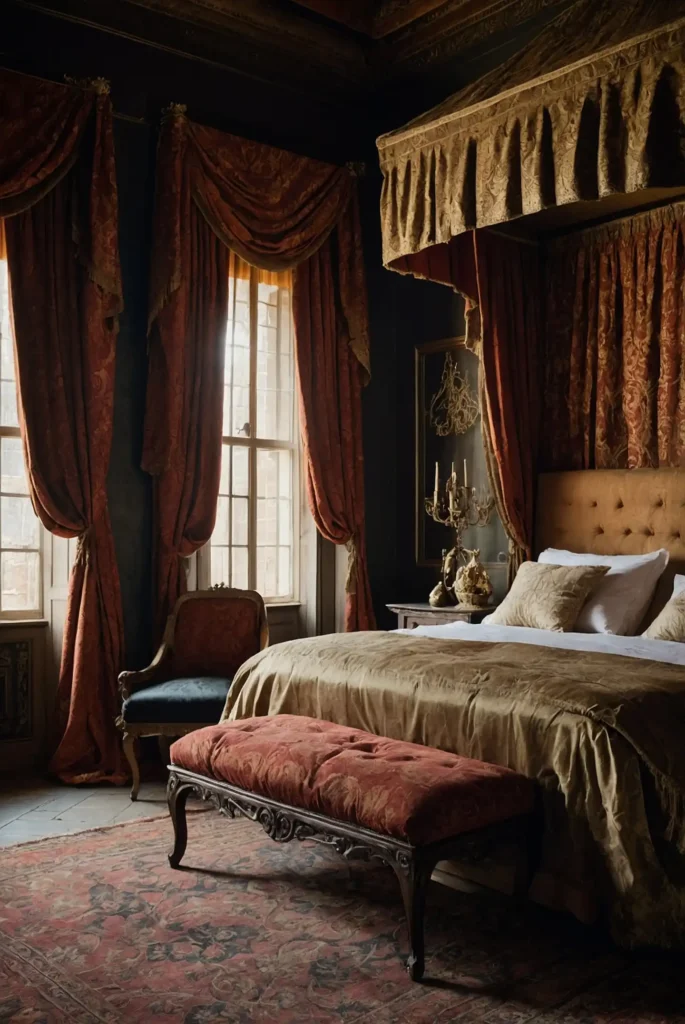
Hang substantial curtains and draperies that pool slightly on the floor. These not only look regal but also serve the practical purpose of insulation.
Choose fabrics with texture like velvet, damask, or brocade. Add decorative tiebacks with tassels or metal embellishments for an extra touch of medieval luxury.
14: Ornate Mirrors
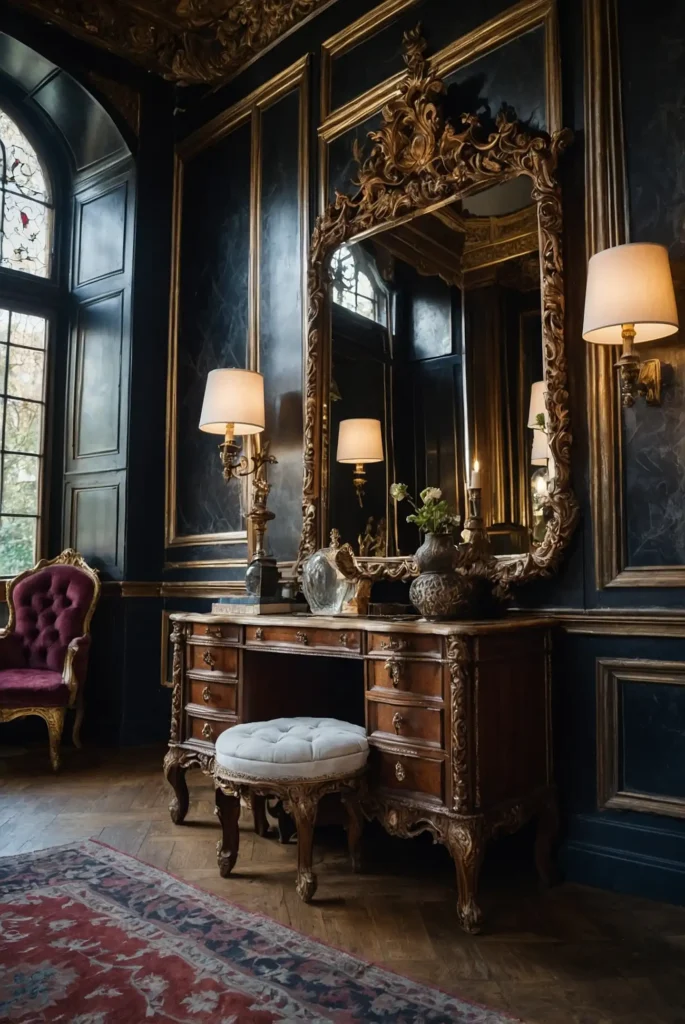
Incorporate mirrors with elaborate frames featuring carved details, metalwork, or distressed finishes. These pieces add light and become art pieces themselves.
Position them to reflect your candle or firelight for a multiplied warm glow effect. Look for gothic arch shapes or round mirrors with ornate detailing around the edges.
15: Medieval-Inspired Art
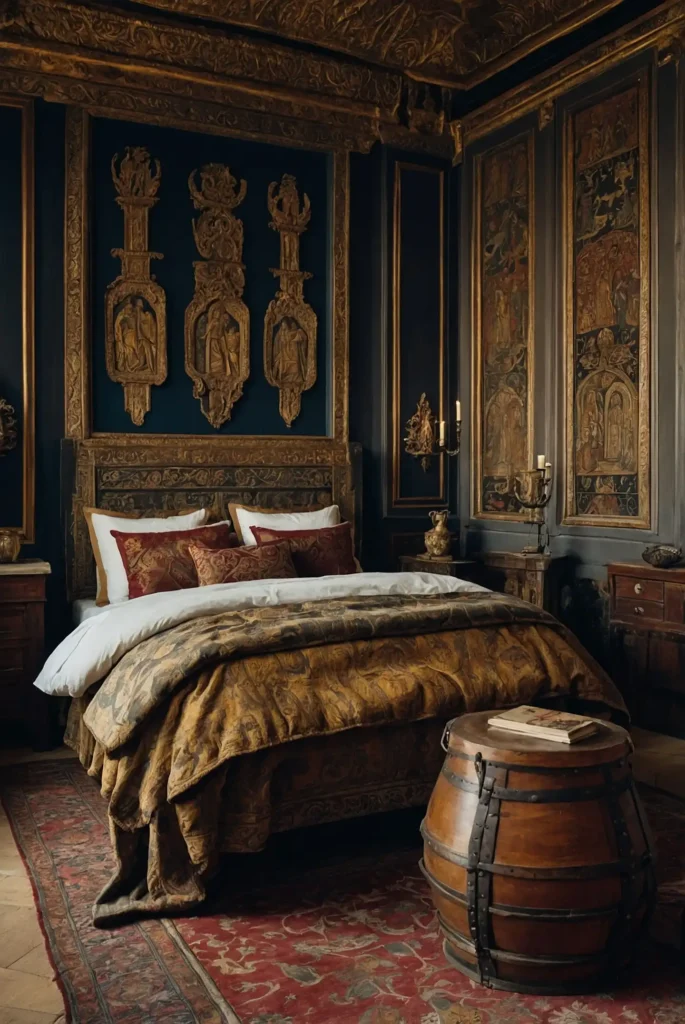
Display art depicting medieval scenes, landscapes, or portraits in ornate frames. These visual elements reinforce your theme and serve as conversation starters.
Consider reproductions of medieval manuscripts, illuminated letters, or maps. Religious iconography was also common in medieval bedchambers, if that aligns with your personal taste.
16: Heraldic Elements
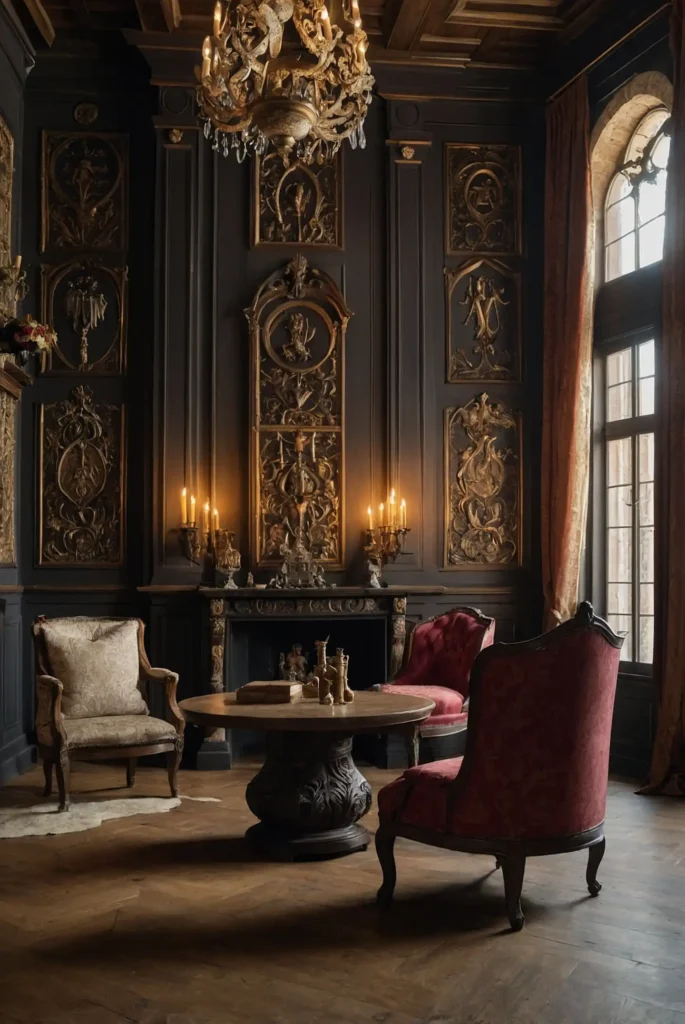
Incorporate shields, crests, or banners that feature heraldic designs. You can create a personal family crest or choose historical designs that appeal to you.
These elements add color, personalization, and authenticity to your medieval bedroom. Position them above doorways, on walls, or integrated into your bedding for maximum impact.
17: Antique or Reproduction Weapons
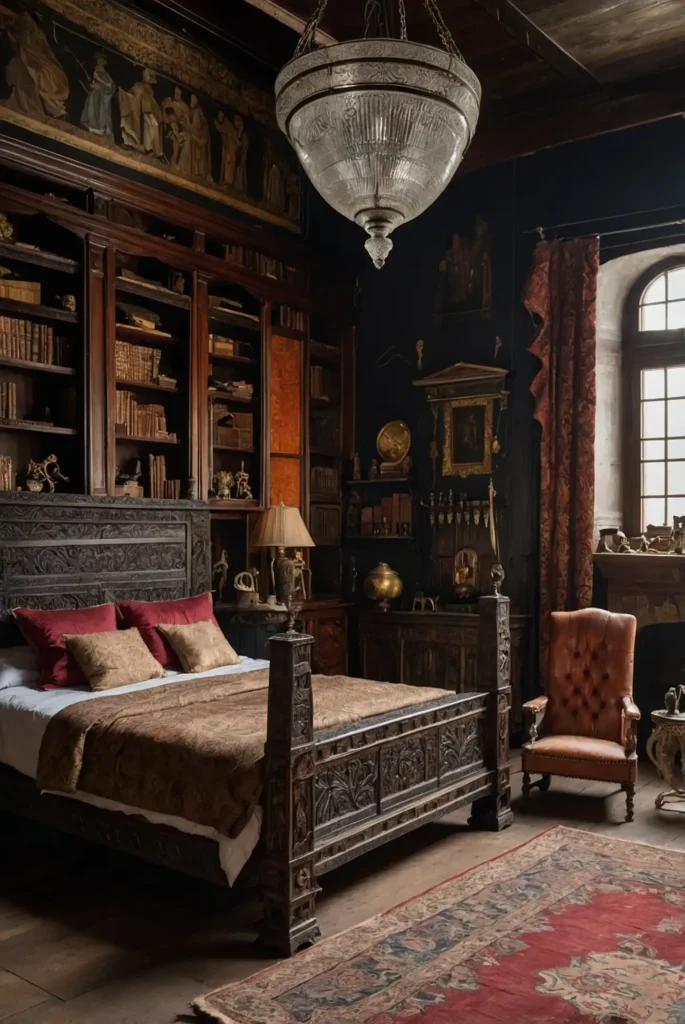
Mount decorative swords, shields, or armor as wall décor to evoke the military aspects of medieval culture. These dramatic pieces serve as instant focal points.
Ensure these are securely mounted and placed away from sleeping areas for safety. Even decorative weapons should be treated with respect and kept out of reach of children.
18: Rustic Wood Flooring
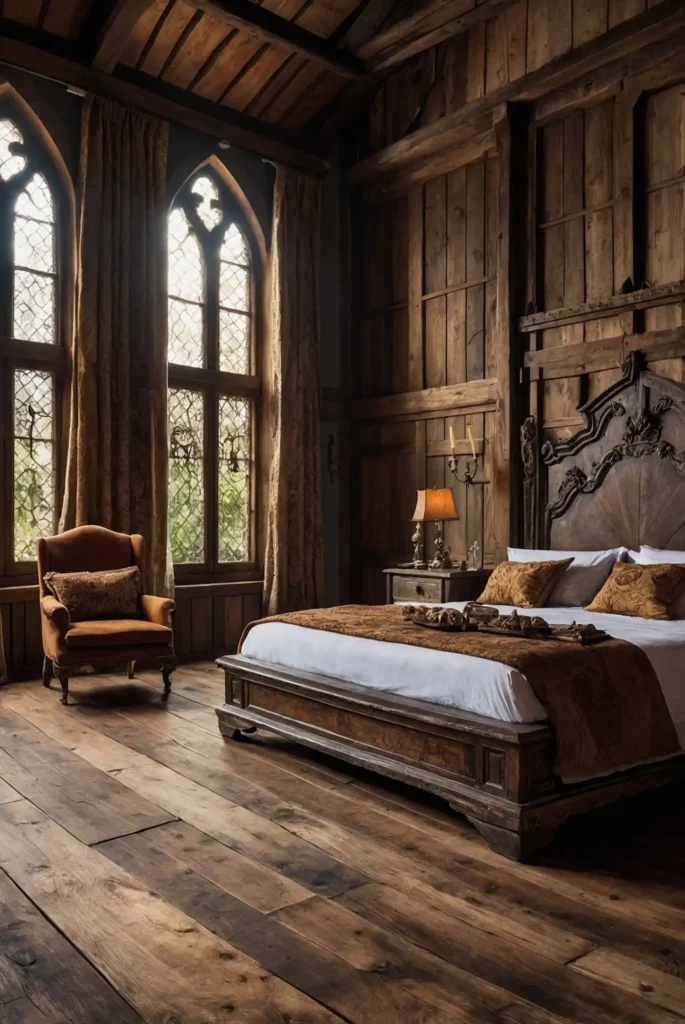
Install wide-plank wood flooring with a hand-scraped or distressed finish. This flooring style accurately reflects medieval construction techniques.
If new flooring isn’t possible, large area rugs with traditional patterns can achieve a similar effect over existing floors. Look for rugs with geometric or floral motifs in rich colors.
19: Cathedral or Gothic Windows
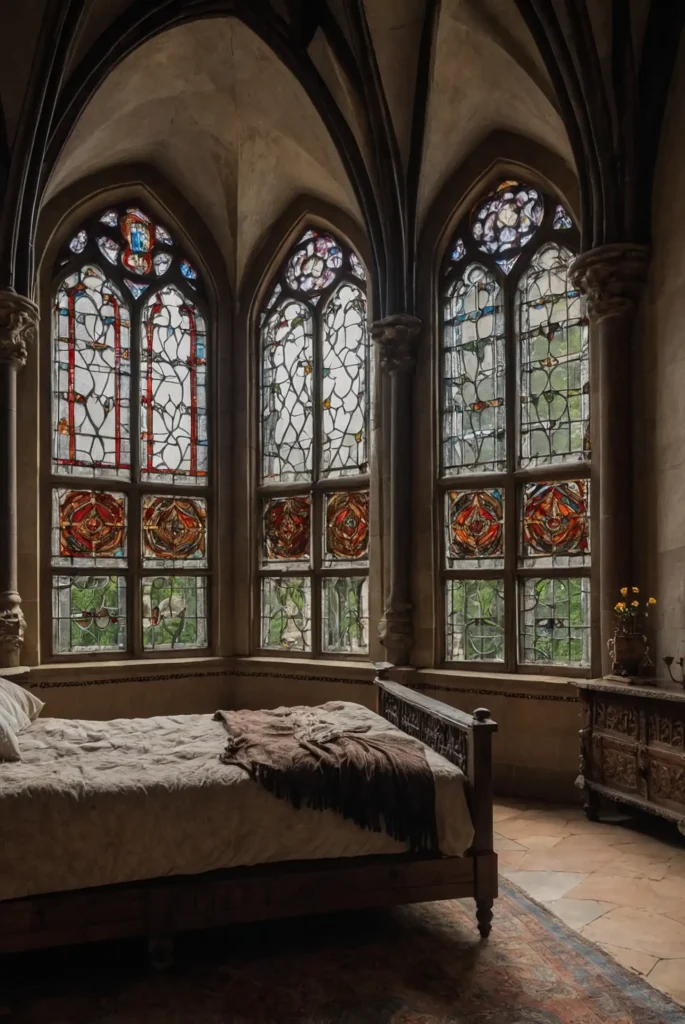
If remodeling is an option, consider windows with pointed arches or diamond-paned glass. These distinctive shapes immediately evoke medieval architecture.
For a less permanent solution, window films or decorative overlays can create the illusion of leaded glass. You can also hang gothic-shaped mirrors or art pieces to suggest arched windows.
20: Medieval Herb Garden Display
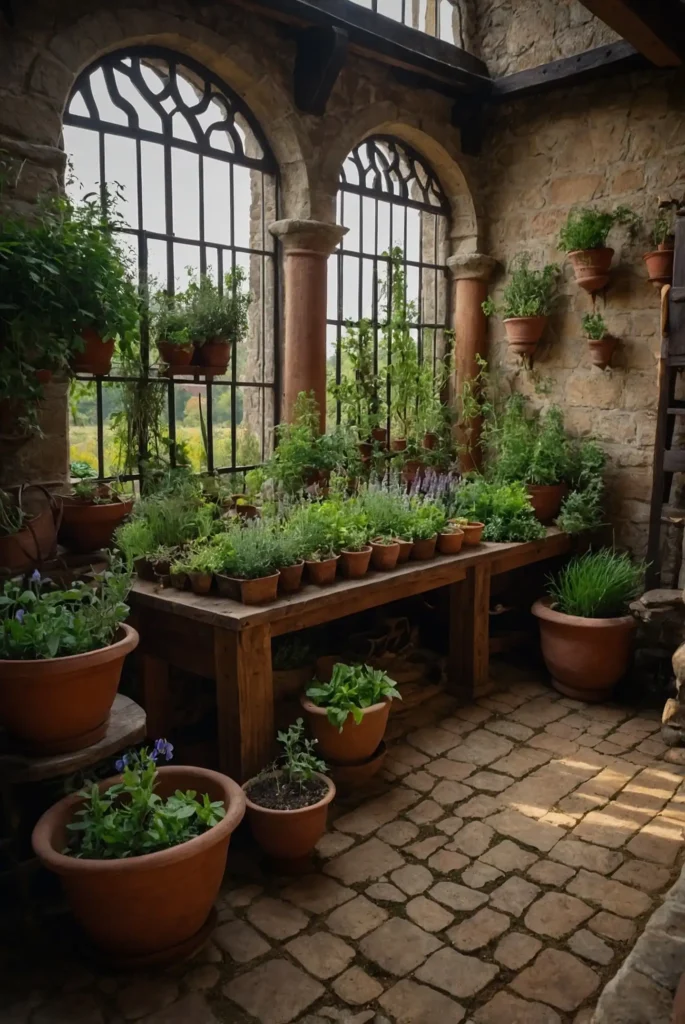
Create a small indoor herb display similar to what might have been found in a medieval solar. Rosemary, lavender, sage, and thyme provide authentic scents.
Display these in terracotta pots or wrought iron plant stands. Beyond their decorative value, these herbs would have been used for cooking, medicine, and freshening air in medieval times.
21: Reading Nook with Writing Desk
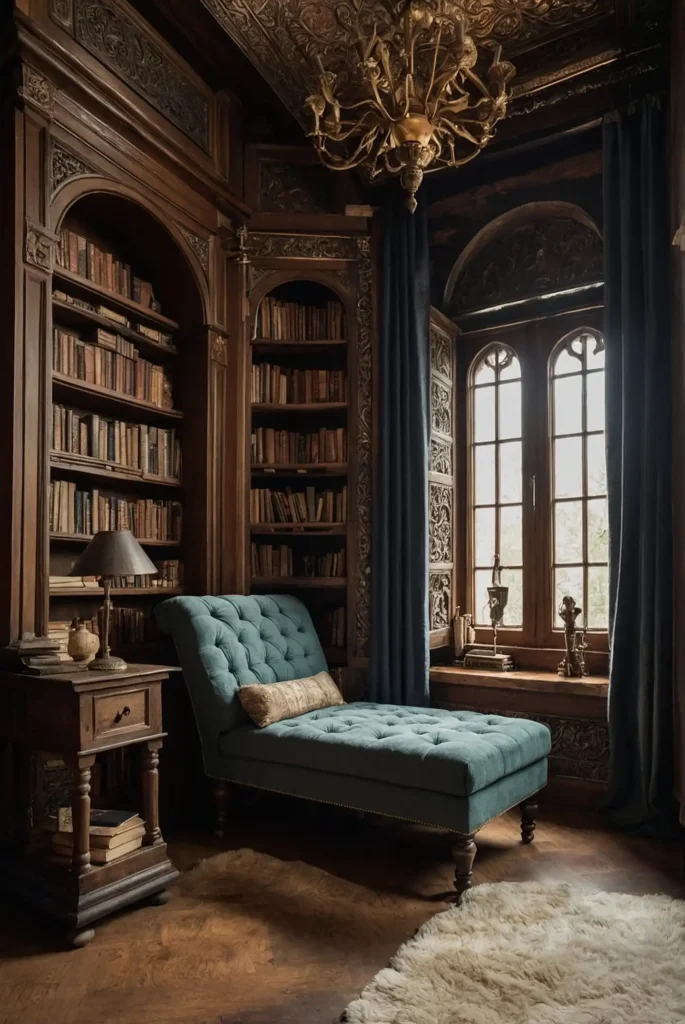
Designate a corner with a substantial wooden desk, comfortable chair, and bookshelf to recreate a medieval scholar’s workspace. Add parchment, quills, or leather-bound books as accessories.
This functional space honors the intellectual traditions of medieval monasteries and noble households. Position it near a window for natural light during daytime hours.
22: Ancient Maps and Navigational Tools
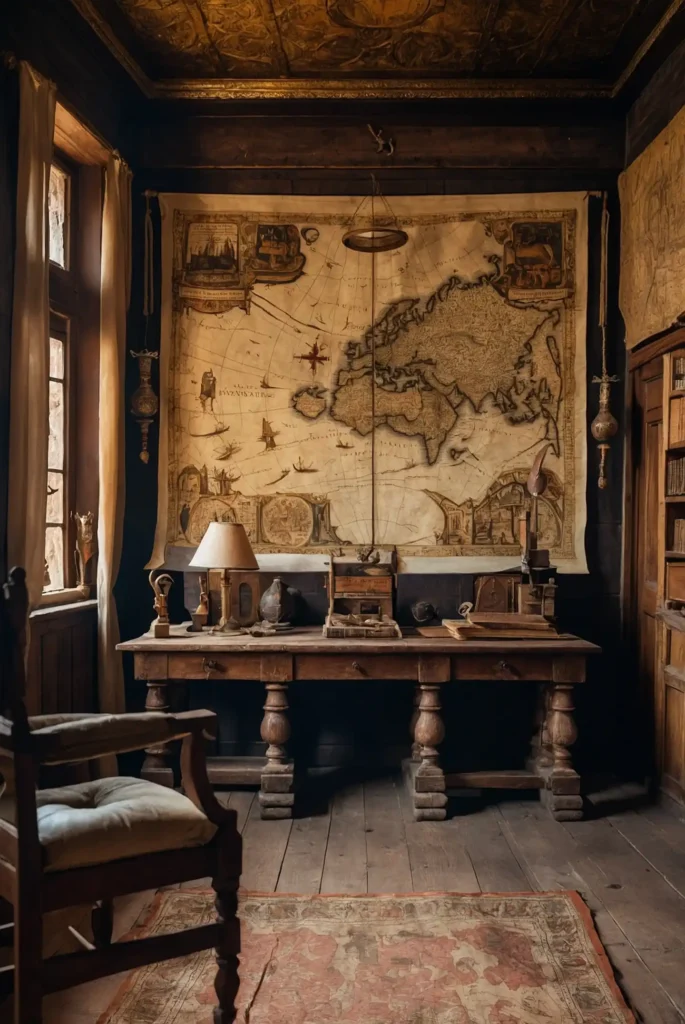
Display reproductions of medieval maps, astrolabes, or other navigational instruments as wall art or desk accessories. These items reflect medieval scientific knowledge.
These decorative elements add intellectual interest and historical context to your bedroom design. They also serve as conversation pieces that highlight medieval achievements.
23: Wooden Trunks and Chests
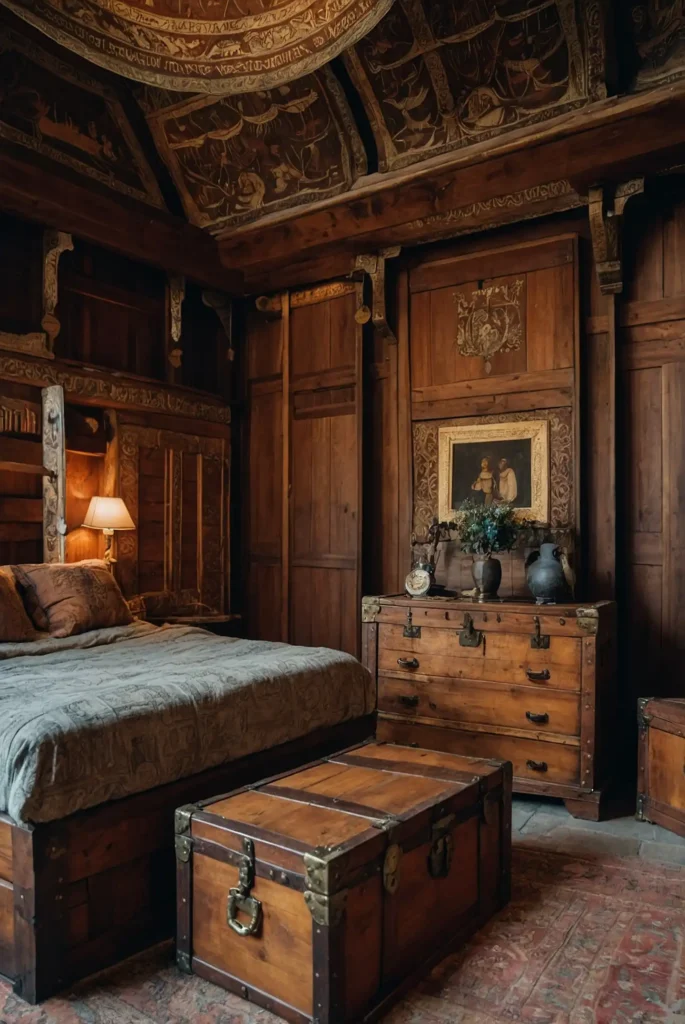
Replace modern storage with wooden trunks and chests featuring metal hardware and visible construction methods. These provide authentic storage while enhancing your theme.
Use them at the foot of your bed, as side tables, or stacked to create unique display areas. Choose pieces with iron banding, visible hinges, and distressed finishes.
24: Wrought Iron Bed Frame

Select a bed frame made from wrought iron with decorative scrollwork and substantial posts. This creates an authentic medieval centerpiece that’s still widely available.
Pair it with rich bedding in jewel tones and add a canopy or fabric draping for additional drama. The contrast between the dark metal and colorful textiles creates visual interest.
25: Window Seats and Alcoves
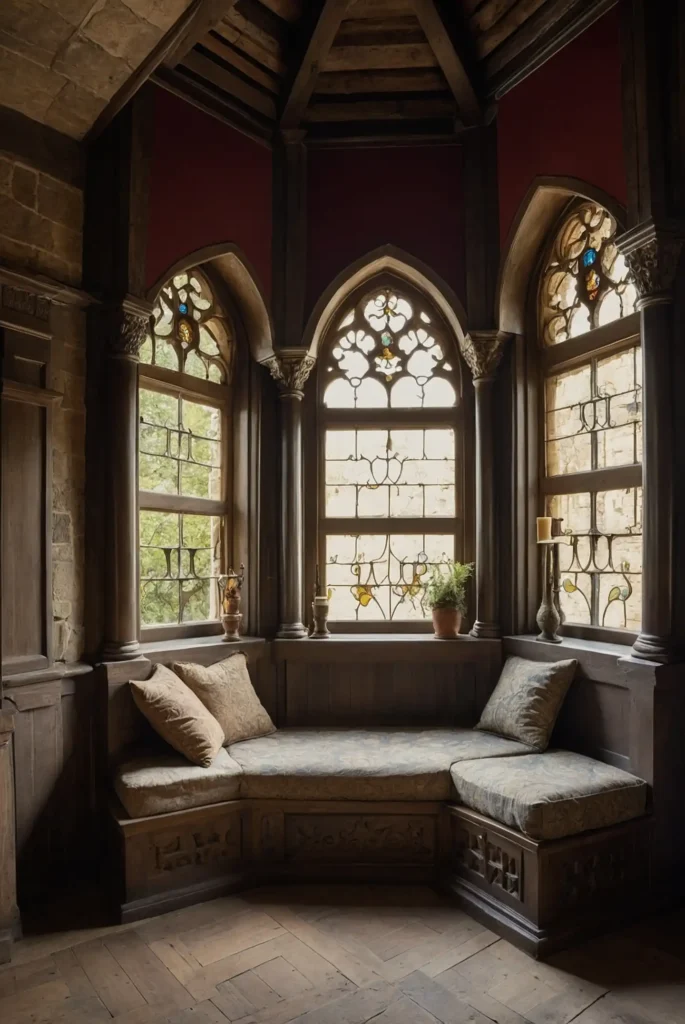
If your bedroom architecture allows, create window seats or reading alcoves reminiscent of castle window embrasures.
These cozy nooks serve functional and aesthetic purposes.
Cushion these areas with rich fabrics and add pillows for comfort. In medieval times, these deep window seats provided rare private spaces in otherwise communal living environments.
26: Natural Material Accents
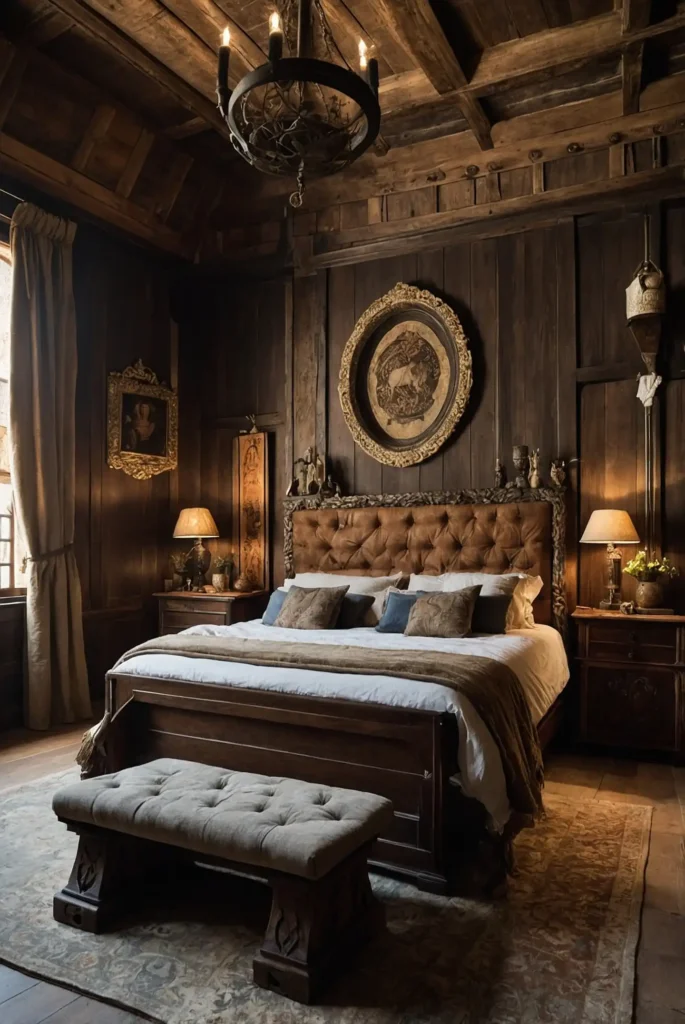
Incorporate elements made from horn, bone, wood, and natural textiles. These authentic materials reflect the resource constraints of medieval craftspeople.
Look for decorative boxes, picture frames, or small accessories featuring these materials. Their organic textures and colors complement the overall medieval aesthetic.
27: Fireplace or Faux Fireplace
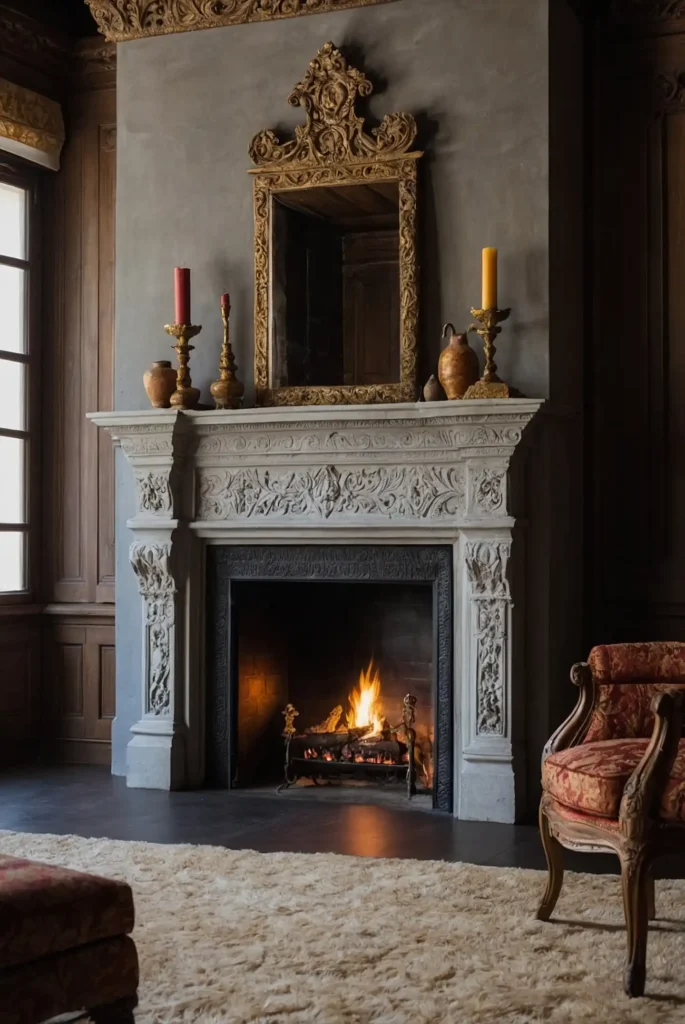
Install a fireplace with a substantial stone or brick surround, or create a decorative faux fireplace to serve as a focal point.
This element was essential in medieval bedchambers.
If a real fireplace isn’t possible, electric inserts provide the ambiance without construction.
Adorn the mantel with wrought iron candle holders, tapestry runners, or medieval-inspired art.
Conclusion
You now have everything you need to transform your bedroom into a medieval retreat.
Combine these ideas to create a space that balances historical inspiration with modern comfort—your own personal castle awaits!

